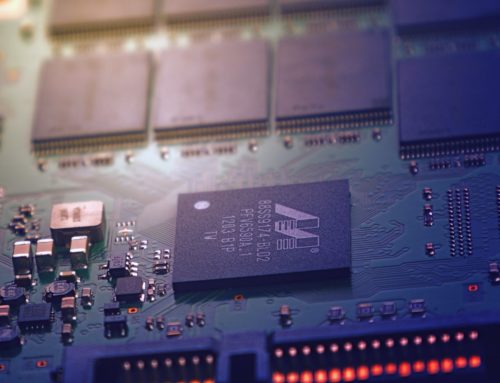In a world where our dependence on technology grows with each passing day, the latest WikiLeaks release has sent shockwaves through the digital realm. As we diligently type away on our sleek laptops and eagerly swipe on our smart devices, an invisible battle unfolds behind the scenes, with intelligence agencies deploying ever more sophisticated techniques to gain access to our private lives. In this daring exposé, we unravel the hidden secrets of the Central Intelligence Agency (CIA) and their startling ability to breach the very core of our internet infrastructure – your router. Brace yourself as we plunge into the rabbit hole of cyber espionage, shedding light on how the CIA’s clandestine hacking endeavors shake the foundations of our digital society, leaving us questioning the true extent of our connectivity. Welcome to a world where your router, once a picture of secure anonymity, may now harbor unseen digital intruders.
Table of Contents
- 1. Decoding the Digital Age: Unveiling the Latest WikiLeaks Revelation on CIA’s Router Hacking Techniques
- 2. Unlocking the World of Espionage: Diving into the Newly Disclosed CIA Methods to Compromise Your Router
- 3. Digital Intruders Exposed: Insights from the Recent WikiLeaks Dump on the CIA’s Router Exploits
- 4. Unmasking the Cyber Secrets: WikiLeaks Sheds Light on CIA’s Astounding Router Hacking Capabilities
- 5. The Wizardry of the CIA Unveiled: How the Latest WikiLeaks Release Illuminates Router Infiltration Tactics
- 6. A Glimpse into the Shadows: WikiLeaks Exposes CIA’s Ingenious Hacks Targeting Your Router
- 7. The Great Router Heist: Whistleblowers Unveil CIA’s Covert Operations from the Latest WikiLeaks Dump
- 8. Peering through the Cyber Curtain: Insights into the Intricate Router Hacking Techniques Disclosed by WikiLeaks
- Q&A
1. Decoding the Digital Age: Unveiling the Latest WikiLeaks Revelation on CIA’s Router Hacking Techniques
In the fast-paced digital age, we are constantly bombarded with new technological advancements and the latest revelations. Recently, WikiLeaks dropped a bombshell by uncovering the CIA’s secretive router hacking techniques. These revelations shed light on the extent of the intelligence agency’s capabilities to infiltrate and compromise computer networks around the world.
The leaked documents provide detailed insights into the tools and methods the CIA employs to exploit vulnerabilities in routers, which serve as gateways for internet traffic. With this newfound knowledge, individuals and organizations can better understand the potential risks and take measures to protect their networks. Some of the key takeaways from this revelation include:
- Vulnerable Router Brands: The leaked documents highlight specific brands and models of routers that are vulnerable to hacking techniques employed by the CIA. This information helps users identify potential weak points in their network infrastructure and consider alternative options.
- Advanced Exploitation Tools: The CIA’s arsenal of router hacking tools includes sophisticated software and techniques to exploit vulnerabilities. Understanding these tools can help network administrators and security experts develop more robust defenses against such attacks.
- Potential Implications: The revelations underscore the importance of maintaining strong network security measures to thwart potential attacks. Organizations must remain vigilant, regularly update their router firmware, and implement best practices to prevent unauthorized access to their networks.
2. Unlocking the World of Espionage: Diving into the Newly Disclosed CIA Methods to Compromise Your Router
In a shocking revelation, classified information regarding the CIA’s clandestine methods to infiltrate routers around the world has emerged. Offering a peek behind the curtain of global surveillance, these revelations shed light on the extent to which intelligence agencies can go to gain access to confidential information. Below are some of the most concerning tactics employed by the CIA:
1. Firmware Impersonation: The CIA has developed sophisticated tools that allow them to mimic the firmware update process of routers. By impersonating legitimate updates, the agency can gain unauthorized access, effectively compromising the security of your network.
2. Packet Injection: Through the utilization of packet injection techniques, the CIA can intercept and manipulate data packets transmitted between your router and connected devices. This allows them to not only monitor your online activities but also manipulate the information you receive or send, opening the door for misinformation campaigns and surveillance.
3. Remote Exploits: With the ability to remotely exploit vulnerabilities in router software, the CIA can gain unauthorized access to your network without physical contact. This alarming capability exposes the fragility of internet infrastructure and underscores the need for robust security measures.
3. Digital Intruders Exposed: Insights from the Recent WikiLeaks Dump on the CIA’s Router Exploits
In a shocking revelation, WikiLeaks has once again rocked the digital world by exposing the Central Intelligence Agency’s (CIA) covert operations through its leaked classified documents. The recent dump from WikiLeaks sheds light on the CIA’s extensive use of router exploits, marking a significant turning point in the ongoing battle between privacy advocates and government surveillance. Here are some intriguing insights from the leaked information:
1. Sophisticated Hacking Tools: The leaked documents uncovered a range of sophisticated hacking tools developed by the CIA. These tools allow the agency to exploit vulnerabilities in routers, granting them unauthorized access to networks for intelligence gathering. This revelation further deepens concerns about the extent to which intelligence agencies are compromising the privacy and security of individuals and organizations.
2. Global Impact: It is evident from the leaked documents that the CIA’s router exploits have a global reach. The agency has developed a collection of tools targeting routers from various manufacturers, including household names like Cisco and Huawei. The scale of this global operation indicates that the CIA’s intrusions affect users worldwide, raising questions about the agency’s jurisdiction and accountability.
4. Unmasking the Cyber Secrets: WikiLeaks Sheds Light on CIA’s Astounding Router Hacking Capabilities
WikiLeaks, notorious for exposing classified information, has once again ruffled feathers with its most recent revelation: the astounding router hacking capabilities of the CIA. Through a series of leaked documents, the secretive organization has unveiled the extent to which the CIA has been able to exploit routers, the often overlooked yet critical nodes of our digital infrastructure.
These declassified documents expose a world of cyber secrets, where the CIA has developed a range of sophisticated tools to infiltrate routers, gaining access to networks, intercepting sensitive information, and even manipulating data flows. The revelations raise significant concerns regarding the security and privacy of individuals, businesses, and governments globally.
The leaked documents reveal that the CIA has developed a toolkit, codenamed “CherryBlossom,” which allows them to systematically target and compromise routers of different makes and models. This includes popular brands such as Cisco, D-Link, and Linksys. By exploiting vulnerabilities in router firmware, the CIA has been able to remotely monitor and control network traffic, essentially weaponizing these devices for their own purposes.
One of the most alarming capabilities exposed is the CIA’s ability to implant “FlyTrap” malicious software onto routers, disguised as legitimate upgrades or patches. Once infected, these routers become powerful surveillance tools, enabling the CIA to identify and track targets, intercept communications, and collect sensitive data. These revelations underscore the critical importance of robust security measures for both manufacturers and users to safeguard against such invasive cyber activities.
WikiLeaks has once again peeled back the layers of secrecy, shedding light on the unsettling cyber world of the CIA. As the dust settles from this latest disclosure, the implications for global cybersecurity and the balance between surveillance and privacy are sure to be hotly debated.
5. The Wizardry of the CIA Unveiled: How the Latest WikiLeaks Release Illuminates Router Infiltration Tactics
The Latest WikiLeaks Release Sheds Light on the CIA’s Router Infiltration Tactics
The most recent WikiLeaks release has caused a seismic shock, unraveling the clandestine operations of the Central Intelligence Agency (CIA). This new batch of revelations offers a peek into the enigmatic world of the CIA’s hacking prowess, particularly their router infiltration tactics. Here, we delve into the fascinating wizardry employed by the CIA, as revealed by WikiLeaks, exposing their ability to penetrate the most secure networks with astonishing finesse.
1. Exploiting Vulnerabilities: CIA operatives are skillful exploiters of the weaknesses that lie within routers. Armed with sophisticated tools and an understanding of network architecture, they capitalize on loopholes, known as vulnerabilities, to gain unauthorized access. By infiltrating routers, the CIA gains control over network traffic, allowing them to intercept and manipulate data as it traverses the network.
2. Customized Malware: To carry out their clandestine activities, the CIA develops and deploys customized malware specifically aimed at compromising routers. This malware is designed to bypass security measures and implant itself deep within the network, rendering it virtually undetectable. Once embedded, the malware grants the CIA full control over the compromised router, enabling them to monitor network activity, collect sensitive information, or even launch further attacks.
6. A Glimpse into the Shadows: WikiLeaks Exposes CIA’s Ingenious Hacks Targeting Your Router
The world was taken by storm recently when WikiLeaks released a trove of documents revealing the Central Intelligence Agency’s (CIA) sophisticated hacking tools and techniques. Among the most intriguing revelations were the agency’s clever hacks targeting routers, which serve as the gateway to our homes and offices. As we go about our daily lives, unaware of the invisible threats lurking in the shadows, it becomes crucial to understand the extent of these hacks and the potential impact on our cybersecurity.
With unparalleled resourcefulness, the CIA has developed an arsenal of tools specifically designed to compromise routers and gain unauthorized access to our networks. These attacks range from exploiting security vulnerabilities to implanting malicious firmware, thus providing backdoors for covert surveillance and data collection. By infiltrating your seemingly innocent router, hackers can access your personal information, monitor your online activities, and even launch more sophisticated attacks, amplifying the potential for widespread cyber espionage. In today’s interconnected world, it is imperative for internet users to heighten their awareness about the vulnerabilities of their routers, ensuring the security and privacy of their digital lives.
7. The Great Router Heist: Whistleblowers Unveil CIA’s Covert Operations from the Latest WikiLeaks Dump
In a shocking revelation, the latest WikiLeaks dump has exposed a series of covert operations conducted by the CIA, bringing the notorious intelligence agency under intense scrutiny once again. Whistleblowers have come forward to expose “The Great Router Heist,” an elaborate scheme executed by the CIA to gain unauthorized access to communication networks worldwide. This disclosure has sent shockwaves through the global intelligence community, raising concerns about privacy and the extent of government surveillance.
The leaked documents reveal that the CIA used advanced hacking techniques to exploit vulnerabilities in routers, the critical devices that direct internet traffic. By compromising these routers, the agency covertly monitored internet communications, infiltrated networks, and potentially gained access to sensitive data. This operation, which spanned across numerous countries and involved various tactics, suggests a disturbing intrusion into the infrastructure that underpins modern communication.
- Clandestine Operations: The leaked files shed light on the CIA’s extensive covert operations, carried out without the knowledge or consent of the targeted countries.
- Global Reach: The scale of “The Great Router Heist” is staggering, marking an unprecedented attempt by the CIA to infiltrate networks on a global scale.
- Erosion of Privacy: The revelation fuels concerns regarding individual privacy, reigniting debates over the ethics of mass surveillance and the balance between security and civil liberties.
While the CIA has remained tight-lipped about the validity of these leaks, the documents yet again cast a shadow of doubt over the agency’s activities and raise questions about the potential abuse of power within the intelligence community.
8. Peering through the Cyber Curtain: Insights into the Intricate Router Hacking Techniques Disclosed by WikiLeaks
The recent release of classified documents by WikiLeaks has unveiled a fascinating world of clandestine cyber activities, specifically focused on router hacking techniques. This revelation has shed light on the sophisticated methods employed by hackers to infiltrate and control routers, which form the backbone of modern computer networks. With this newfound knowledge, security experts and network administrators can now better understand the evolving threat landscape and fortify their defenses.
Here are some key insights gleaned from the leaked documents:
- Advanced Intrusion Methods: The disclosed documents provide detailed information about advanced intrusion methods used by malicious actors to compromise routers. These techniques range from exploiting software vulnerabilities to leveraging social engineering tactics to gain unauthorized access.
- Router Firmware Manipulation: The leaked information highlights the significant risks associated with router firmware manipulation. Hackers can surreptitiously modify or replace firmware to create backdoors, allowing them to control router functions remotely and bypass traditional security measures.
- Supply Chain Vulnerabilities: The documents also emphasize the vulnerability of routers in the supply chain. By compromising routers at their source, attackers can implant malicious code or hardware, granting them persistent access to networks.
It is crucial for organizations and individuals to stay vigilant and take proactive measures to defend against these router hacking techniques. As the cyber threatscape continues to evolve, gaining insights into the tactics employed by hackers fuels the development of stronger and more effective security strategies.
As we delve deeper into the realm of technology, the line between security and vulnerability becomes increasingly blurred. The latest WikiLeaks release regarding the CIA’s hacking capabilities sheds light on a disconcerting reality – even our routers, the guardians of our online world, may not be as impenetrable as we once believed.
In a world where virtual realms converge with our everyday lives, the CIA’s ability to infiltrate the very routers we depend on for seamless connectivity is nothing short of unsettling. Through a meticulous collection of tools and techniques, they exploit vulnerabilities that lurk within these unassuming devices, effectively rendering our private lives an open book. The once unquestioned sanctity of our virtual realms is splintered, like a fragile facade crumbling under the weight of truth.
With every new WikiLeaks release, the world seemingly plunges into a bewildering tangle of privacy concerns and technological intrigue. We find ourselves facing a somber reality – in this digital age, no system is entirely invulnerable. It forces us to question the very nature of security in a landscape where hackers – whether official or renegade – lurk in the shadows, constantly probing for weaknesses.
Yet, in the midst of this disconcerting revelation, let us not abandon all hope. While the cracks in our security systems are exposed, knowledge is power – the knowledge of these vulnerabilities empowers us to be more vigilant, more conscious of the digital footprints we leave behind. With this newfound awareness, we can strive to strengthen the ramparts that guard our virtual lives, building a more robust foundation for our interconnected world.
The latest WikiLeaks release serves as a sober reminder that constant vigilance and innovation are indispensable in our ongoing battle for digital security. It prompts us to challenge our assumptions, to seek cutting-edge solutions, and to demand accountability from those who hold the keys to our collective digital welfare.
In the end, we mustn’t let disillusionment consume us. Instead, let it ignite a spark, a determination to forge ahead, arming ourselves with knowledge and resilience. As we navigate this intricate web of technological prowess and vulnerabilities, let us work together towards a safer, more secure future. Only then can we hope to build a digital landscape that preserves our privacy, champions freedom, and upholds the bedrock ideals of our society.




Leave A Comment